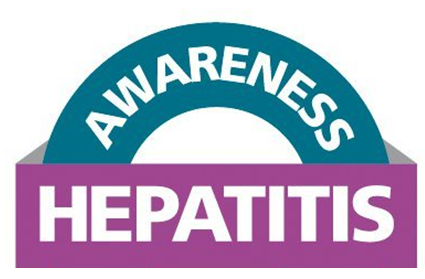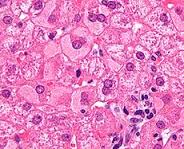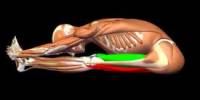What is viral hepatitis :
Viral hepatitis is inflammation of the liver caused by a virus.Viral hepatitis is a liver disease that is caused by exposure to one of the five hepatitis viruses. Each virus is named after a letter of the alphabet, hepatitis A through E. Though other viruses can cause hepatitis, only the five are considered hepatitis viruses.
Each of the five hepatotropic viruses are alike in many ways. They all infect the cells of the liver causing inflammation. Depending on which virus is causing trouble, there is often an acute illness that produces similar signs and symptoms.
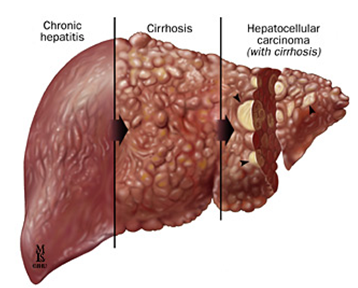
Causative agent :
Viral hepatitis is a disease of the liver caused by one of several viruses: hepatitis A, B, C, D, E, F and G.Hepatitis D and E are very rare.
The following seven viruses are known as causative agents of acute hepatitis: hepatitis A virus (HAV), hepatitis B virus (HBV), hepatitis C virus (HCV), hepatitis D virus (HDV), hepatitis E virus (HEV), hepatitis G virus (HGV) and TT virus (TTV). All these viruses except for HAV and HEV cause chronic hepatitis; HBV and HCV are the major causative viruses of chronic hepatitis, which may progress to liver cirrhosis and eventually to hepatocellular carcinoma (HCC)
Symptoms of viral hepatitis :
- Jaundice, which causes a yellowing of the skin and eyes.
- Fatigue.
- Abdominal pain.
- Loss of appetite.
- Nausea.
- Vomiting.
- Diarrhea.
- Low grade fever.
- Headache.
However, some people do not have symptoms.
How can produce the diseases :
Viral hepatitis is caused by the hepatitis A, B, C D and E viruses. Hepatitis A & E can be transmitted by contaminated food or water. Hepatitis B and C occur when blood or bodily fluids from an infected person enter the body of an un-infected person. These viruses can be transmitted through various means, such as illicit intravenous drug use, unprotected sex, or from a mother to her newborn during birth. Blood transfusions, especially those received before 1990, used to be a source of hepatitis B and C, but blood used in transfusions is now screened for the hepatitis viruses.
Hepatitis A :

Hepatitis A virus is a picornavirus, a small single strand RNA virus
How is hepatitis A spread :
Hepatitis A is spread primarily through food or water contaminated by feces from an infected person. Rarely, it spreads through contact with infected blood.
Who is at risk for hepatitis A :
People most likely to get hepatitis A are
- international travelers, particularly those traveling to developing countries
- people who live with or have sex with an infected person
- people living in areas where children are not routinely vaccinated against hepatitis A, where outbreaks are more likely
- day care children and employees, during outbreaks
- men who have sex with men
- users of illicit drugs
How can hepatitis A be prevented :
The hepatitis A vaccine offers immunity to adults and children older than age 1. The Centers for Disease Control and Prevention recommends routine hepatitis A vaccination for children aged 12 to 23 months and for adults who are at high risk for infection. Treatment with immune globulin can provide short-term immunity to hepatitis A when given before exposure or within 2 weeks of exposure to the virus. Avoiding tap water when traveling internationally and practicing good hygiene and sanitation also help prevent hepatitis A.
The treatment for hepatitis A :There is no specific treatment for hepatitis A. Rest is recommended when the symptoms are most severe.Hepatitis A usually resolves on its own over several weeks.
Hepatitis B :
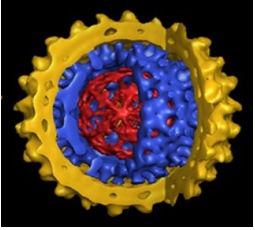
Hepatitis B virus belongs to the hepadnavirus family of double stranded DNA viruses
How is hepatitis B spread :
Hepatitis B is spread through contact with infected blood, through sex with an infected person, and from mother to child during childbirth, whether the delivery is vaginal or via cesarean section.
Signs and Symptoms of hepatitis B :
About 30% of people infected with the hepatitis B virus have no signs or symptoms; signs and symptoms are more common in adults than in children. When signs and symptoms appear they include: jaundice (yellowing of the skin and eyes), fatigue, abdominal pain, loss of appetite, nausea, vomiting, and joint pain.
Who is at risk for hepatitis B :
People most likely to get hepatitis B are
- people who live with or have sexual contact with an infected person
- men who have sex with men
- people who have multiple sex partners
- injection drug users
- immigrants and children of immigrants from areas with high rates of hepatitis B
- infants born to infected mothers
- health care workers
- hemodialysis patients
- people who received a transfusion of blood or blood products before 1987, when better tests to screen blood donors were developed
- international travelers
How can hepatitis B be prevented :
The hepatitis B vaccine offers the best protection. All infants and unvaccinated children, adolescents, and at-risk adults should be vaccinated. For people who have not been vaccinated, reducing exposure to the virus can help prevent hepatitis B. Reducing exposure means using latex condoms, which may lower the risk of transmission; not sharing drug needles; and not sharing personal items such as toothbrushes, razors, and nail clippers with an infected person.
The treatment for hepatitis B :The treatment goal for the hepatitis B virus is to render the infection inactive and help control disease progression.
There are two types of treatments available to help treat the hepatitis B virus (HBV): injectable interferon-alpha and oral direct inhibitors of the virus, like lamivudine, adefovir, entecavir, and telbivudine.
People who develop acute hepatitis B are generally not treated with antiviral drugs because, depending on their age at infection, the disease often resolves on its own. Infected newborns are most likely to progress to chronic hepatitis B, but by young adulthood, most people with acute infection recover spontaneously. Severe acute hepatitis B can be treated with an antiviral drug such as lamivudine.
Hepatitis C :
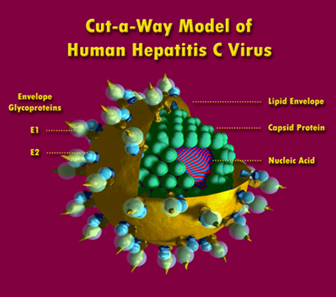
Hepatitis C virus is a flavivirus, a single stand RNA virus;
How is hepatitis C spread :
Hepatitis C virus (HCV) primarily affects injection-drug users who share needles, non-sterile instruments, and other drug equipment. Approximately two-thirds to three-quarters of new HCV infections each year are related to injectable drug use; cleaning the equipment with bleach does not always completely kill the virus.
Another way of getting HCV is through a blood transfusion from an infected donor, especially for people who received a transfusion before 1990. The risk of getting HCV this way is extremely low now because all blood donors go through universal blood testing
There is a 5% risk of a mother passing the hepatitis C virus to her newborn.
Hepatitis C is spread primarily through contact with infected blood. Less commonly, it can spread through sexual contact and childbirth.
Signs and Symptoms of hepatitis C :
About 80% of people infected with the hepatitis C virus have no signs or symptoms. When signs and symptoms appear they include: jaundice (yellowing of the skin and eyes), fatigue, dark-coloured urine, abdominal pain, loss of appetite, and nausea.
Who is at risk for hepatitis C :People most likely to be exposed to the hepatitis C virus are
- injection drug users
- people who have sex with an infected person
- people who have multiple sex partners
- health care workers
- infants born to infected women
- hemodialysis patients
- people who received a transfusion of blood or blood products before July 1992, when sensitive tests to screen blood donors for hepatitis C were introduced
- people who received clotting factors made before 1987, when methods to manufacture these products were improved
How can hepatitis C be prevented :
There is no vaccine for hepatitis C. The only way to prevent the disease is to reduce the risk of exposure to the virus. Reducing exposure means avoiding behaviors like sharing drug needles or personal items such as toothbrushes, razors, and nail clippers with an infected person.
The treatment for hepatitis C :
The treatment for people diagnosed with new hepatitis C virus (HCV) infections is to get rid of the virus. Many people with chronic hepatitis C will feel well for years. But in 10%-20% of people, chronic HCV may lead to irreversible and potentially fatal scarring of the liver. This is called cirrhosis. In severe cases HCV may lead to liver cancer or liver failure and a liver transplant may be necessary.
About 15-25% of people infected with the hepatitis C virus (HCV) have a mild case of the disease and get rid of it on their own in a brief amount of time. When this happens, the HCV antibodies remain detectable in the blood but the actual virus does not. Unfortunately, most people who become infected with HCV will have the infection for a long time and possibly for the rest of their lives. If this is the case, your doctor may refer you to a specialist to decide whether or not you need treatment. Drug treatment is usually a combination of two drugs: pegylated interferon and ribavirin. Pegylated interferon (a drug used to help fight infection) is given by injection under the skin once a week. Ribavirin is an antiviral drug and is taken as a pill twice a day. Therapy typically lasts from 12 weeks to one year depending on response and the strain of the HCV virus (viral genotype). This combination can get rid of the virus in about half of treated patients. It is recommended not to drink alcohol, as it can worsen liver disease.
In severe cases, chronic, long-term HCV may lead to liver cancer or liver failure and a liver transplant may be needed.
hepatitis C is treated with peginterferon together with the antiviral drug ribavirin.
If acute hepatitis C does not resolve on its own within 2 to 3 months, drug treatment is recommended.
Hepatitis D :
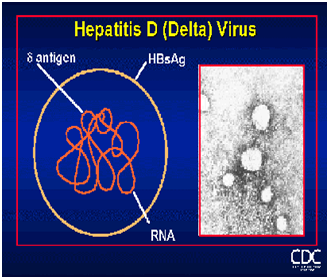
Hepatitis D which is also known as Delta agent is a circular RNA that is more similar to a plant a viroid than a complete virus.
How is hepatitis D spread :
Hepatitis D is spread through contact with infected blood. This disease only occurs at the same time as infection with hepatitis B or in people who are already infected with hepatitis B.
Who is at risk for hepatitis D :
Anyone infected with hepatitis B is at risk for hepatitis D. Injection drug users have the highest risk. Others at risk include
- people who live with or have sex with a person infected with hepatitis D
- people who received a transfusion of blood or blood products before 1987
How can hepatitis D be prevented :
People not already infected with hepatitis B should receive the hepatitis B vaccine. Other preventive measures include avoiding exposure to infected blood, contaminated needles, and an infected person’s personal items such as toothbrushes, razors, and nail clippers.
The treatment for hepatitis D :
HDV has a worldwide distribution and is transmitted parenterally, with a high incidence in intravenous drug abusers. In general HDV does not need to be routinely assessed in children with acute hepatitis (fig 2), but should be measured in known carriers of hepatitis B, as coinfection or superinfection may lead to acute or fulminant hepatitis, or a more rapid progression of chronic hepatitis.α Interferon therapy for chronic hepatitis B is also effective for HDV coinfection, but eradication of the disease is dependent on successful vaccination and prevention of hepatitis B worldwide
Chronic hepatitis D is usually treated with pegylated interferon, although other potential treatments are under study..
Hepatitis E :
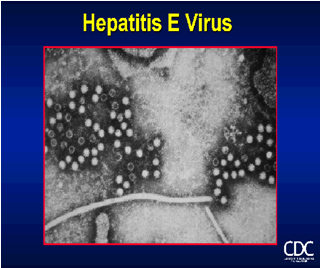
Hepatitis E, also an RNA virus, is similar to a calicivirus.
EV is a non-enveloped, single stranded virus which has been reported to cause large outbreaks of acute hepatitis in South East and Central Asia, the Middle East, Africa, and Mexico. Commercial enzyme immunoassays are available and detection of specific IgM suggests recent infection, while IgG suggests immunity to previous exposure. As specificity and sensitivity of the assays is not optimal, interpretation of the results should be considered carefully. RT-PCR has been developed but is used mainly for research. The virus spreads by the faecal–oral route, often by contaminated water. HEV has a particularly high attack rate in young adults, and is a significant cause of fulminant hepatitis in endemic areas, particularly in pregnant females with resulting increased mortality and fetal wastage. Sporadic cases have been reported in the United Kingdom. The main clinical risk is in returning travellers; obstetricians need to be aware of HEV as a diagnosis in pregnant women returing from endemic areas. There is no specific treatment for HEV. Most patients recover and chronic HEV infection does not develop.
How is hepatitis E spread :
Hepatitis E is spread through food or water contaminated by feces from an infected person. This disease is uncommon in the United States.
Who is at risk for hepatitis E :
People most likely to be exposed to the hepatitis E virus are
- international travelers, particularly those traveling to developing countries
- people living in areas where hepatitis E outbreaks are common
- people who live with or have sex with an infected person
How can hepatitis E be prevented :
There is no U.S. Food and Drug Administration (FDA)-approved vaccine for hepatitis E. The only way to prevent the disease is to reduce the risk of exposure to the virus. Reducing risk of exposure means avoiding tap water when traveling internationally and practicing good hygiene and sanitation.
The treatment for hepatitis E :
There is no U.S. Food and Drug Administration (FDA)-approved vaccine for hepatitis E. The only way to prevent the disease is to reduce the risk of exposure to the virus. Reducing risk of exposure means avoiding tap water when traveling internationally and practicing good hygiene and sanitation.
Hepatitis E usually resolves on its own over several weeks to months.
Hepatitis F :

The difficulty in establishing an aetiology for many cases of fulminant hepatitis led to the suggestion that a Toga virus (hepatitis F) may be responsible, but initial reports have not been substantiated and no specific virus has been identified as hepatitis F. There is no necessity therefore, to consider testing for hepatitis F .
Hepatitis G (HGV/GBV-C) :

Hepatitis G are single stranded, positive sense RNA viruses which are distantly related to HCV.
The virus is readily transmitted by blood transfusion, with a carrier rate of 2–5% in the general population; this is higher than for other blood borne viruses, and suggests other routes of transmission. There is increased incidence of infection in prostitutes (40%) and homosexuals (47%), showing the probable importance of sexual transmission, while partners of patients with HCV and HGV showed a higher rate of infection with HGV (42%) compared to HCV (14%)..
TRANSFUSION TRANSMISSABLE VIRUS (TTV) :

TTV is the latest virus to be linked with post-transfusion hepatitis The non-enveloped single stranded DNA virus is particularly prevalent in patients with frequent parenteral exposure Like HGV virus, TTV is efficiently transmitted from mother to child with long term persistent infection. TTV is commonly associated with hepatitis B (13%), hepatitis C (16%), hepatitis A (5%), and hepatitis E (20%), but there was no correlation between coinfection, TTV titre, and liver damage, suggesting that TTV may not have a pathological role
TTV infection in both healthy children and those with liver disease, suggesting not only that
Points to Remember
- Viral hepatitis is inflammation of the liver caused by the hepatitis A, B, C, D, or E viruses.
- Depending on the type of virus, viral hepatitis is spread through contaminated food or water, contact with infected blood, sexual contact with an infected person, or from mother to child during childbirth.
- Vaccines offer protection from hepatitis A and hepatitis B.
- No vaccines are available for hepatitis C, D, and E. Reducing exposure to the viruses offers the best protection.
- Hepatitis A and E usually resolve on their own. Hepatitis B, C, and D can be chronic and serious. Drugs are available to treat chronic hepatitis.
